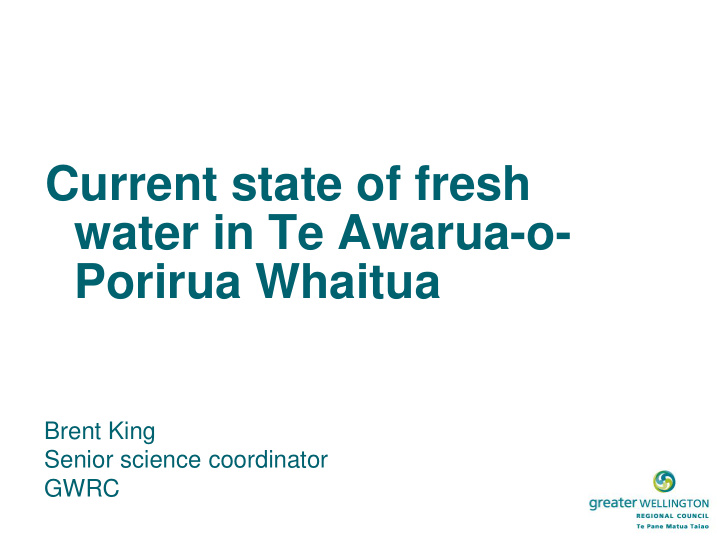



Current state of fresh water in Te Awarua-o- Porirua Whaitua Brent King Senior science coordinator GWRC
What are we reporting and why? • E. coli indicates how safe it is to use the river for swimming and other Grade Narrative descriptor activities where we might swallow A Very good water B Good • C Fair High levels of some contaminants D Poor can directly affect the growth, E Very poor reproduction and survival of plants, insects and fish that live in the river • Grades decreasing levels of protection from these effects
What is the catchment modelling and how can you use it? • We can’t and don’t monitor everywhere • Use known patterns in water and contaminant generation, transport and removals • Trained to local conditions with local data
What is the catchment modelling and how can you use it? • Look for the big patterns • Results graded (A-E) • Draw on your own and others’ knowledge
E. coli • Results showed poor (D) and very poor (E) conditions everywhere • Poor both when its dry and wet • Major sources • Livestock on grazed pasture • Stormwater and faulty sewer connections • Wastewater overflows • Limited dilution and die-off with low flows and short catchments
Nitrate toxicity • Mainly very good (A) and good (B) results overall • Dry conditions usually very good, good results during wetter periods • Main sources • urban greenspace • grazed pastures • Take care with results in small catchments
Ammonia toxicity • The model tended to predict worse toxicity grades than the observed data • Fair (C) results associated with wastewater overflows • Dry and wet weather flows generally good (B) or very good (A) in urban and rural areas • Good results likely to be better than reported in many places
Zinc toxicity • Generally very good (A) in rural areas • Fair (C) or poor (D) in urban areas in both wet and dry conditions • Major sources • commercial and industrial areas • The four poor results are in small catchments, though these do have high levels of those major sources
Copper toxicity • Generally very good (A) in rural areas • Fair (C) or poor (D) in urban areas particularly in wet conditions • Major sources • Roads • Residential • Commercial and industrial areas
Modelled current state of fresh water in Te Awarua-o-Porirua Whaitua • Questions • Exercise to use these and other knowledge sources
Recommend
More recommend